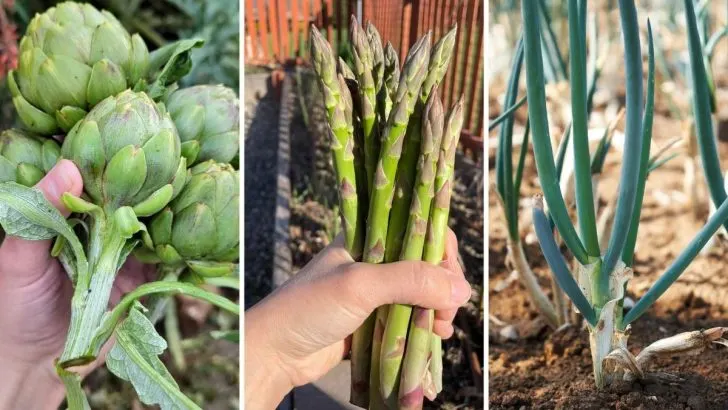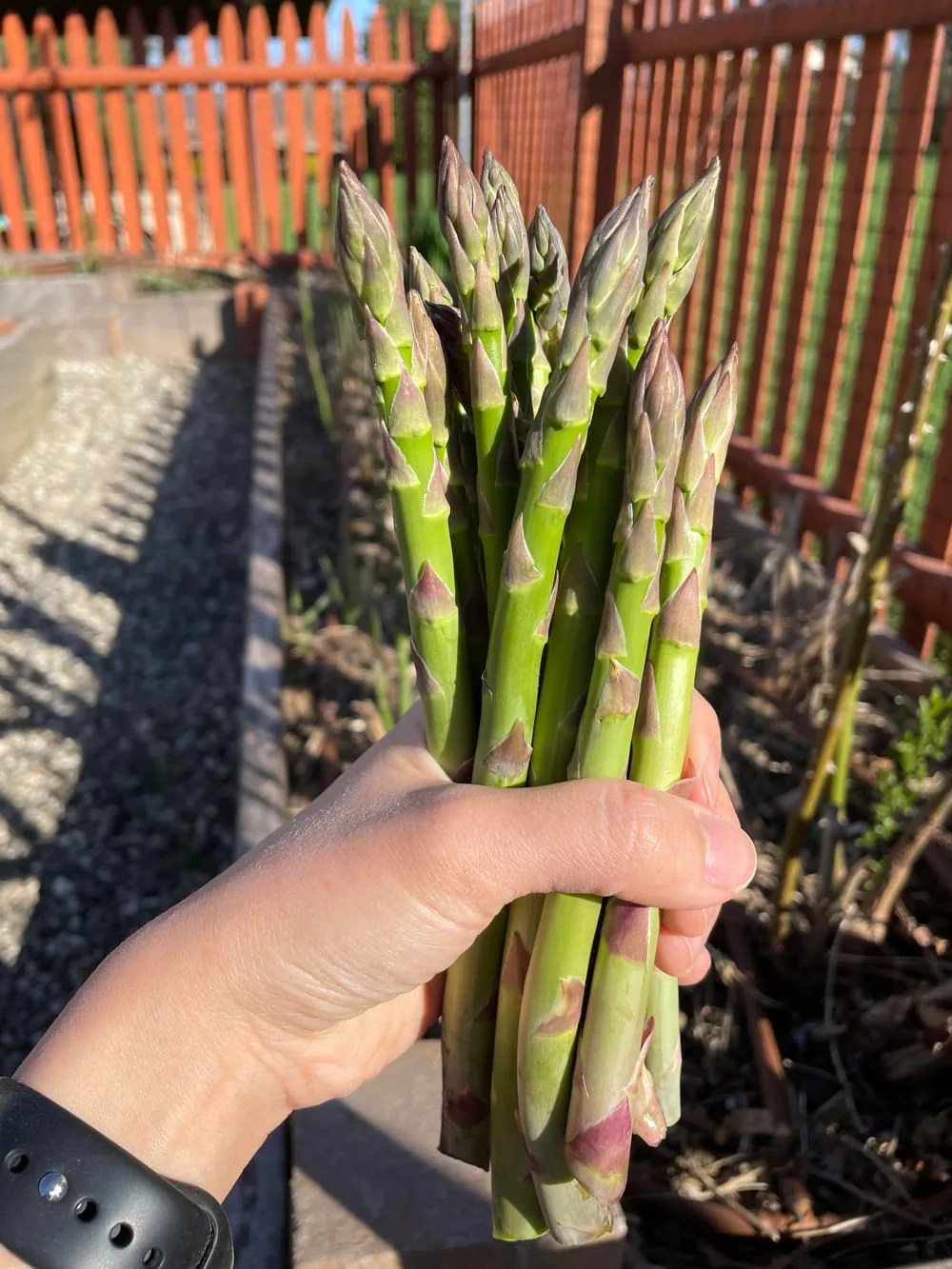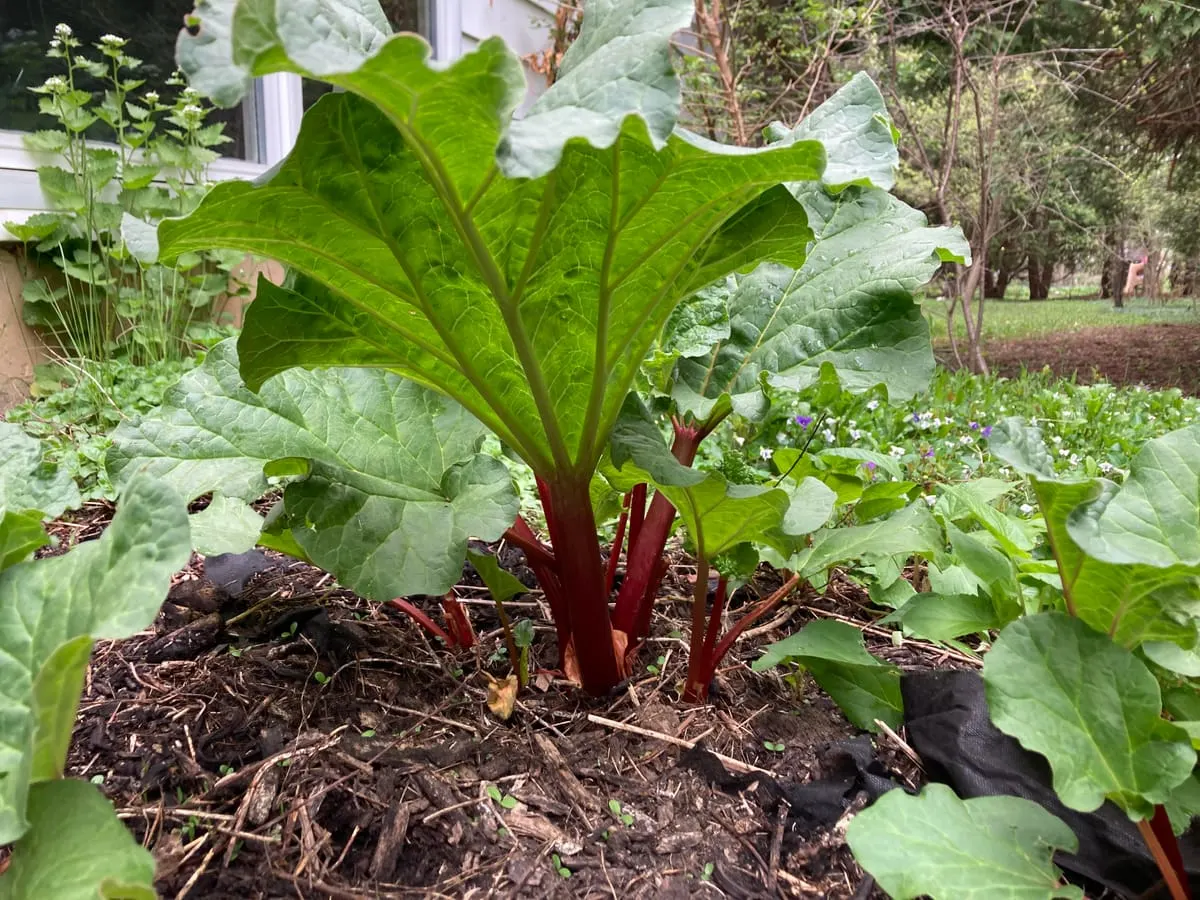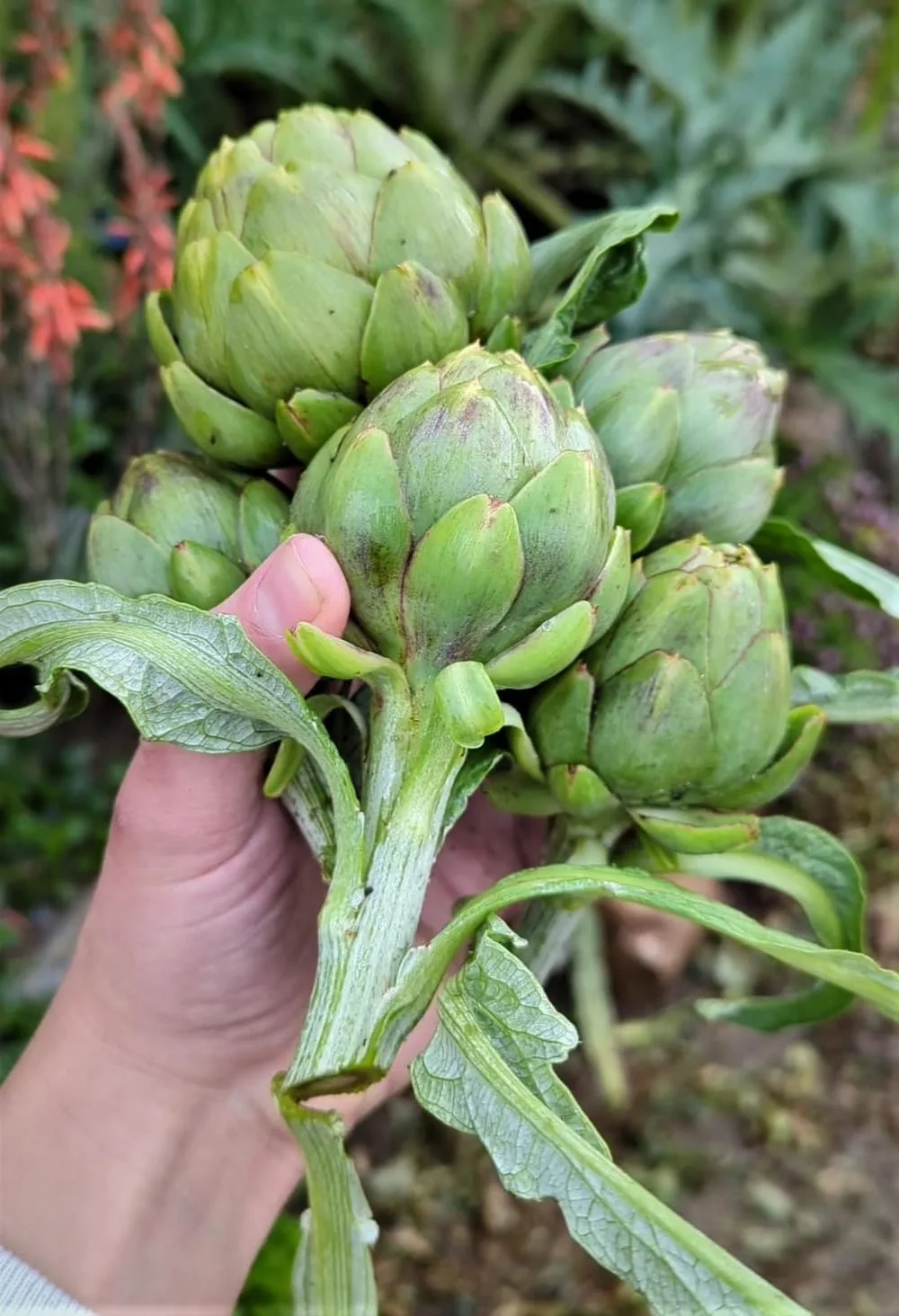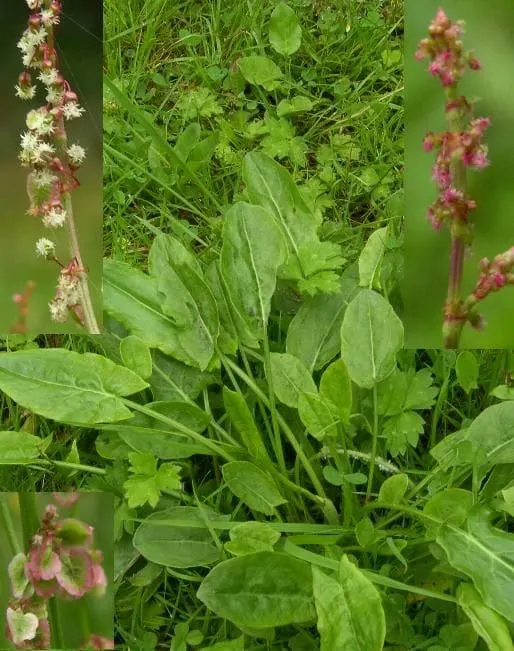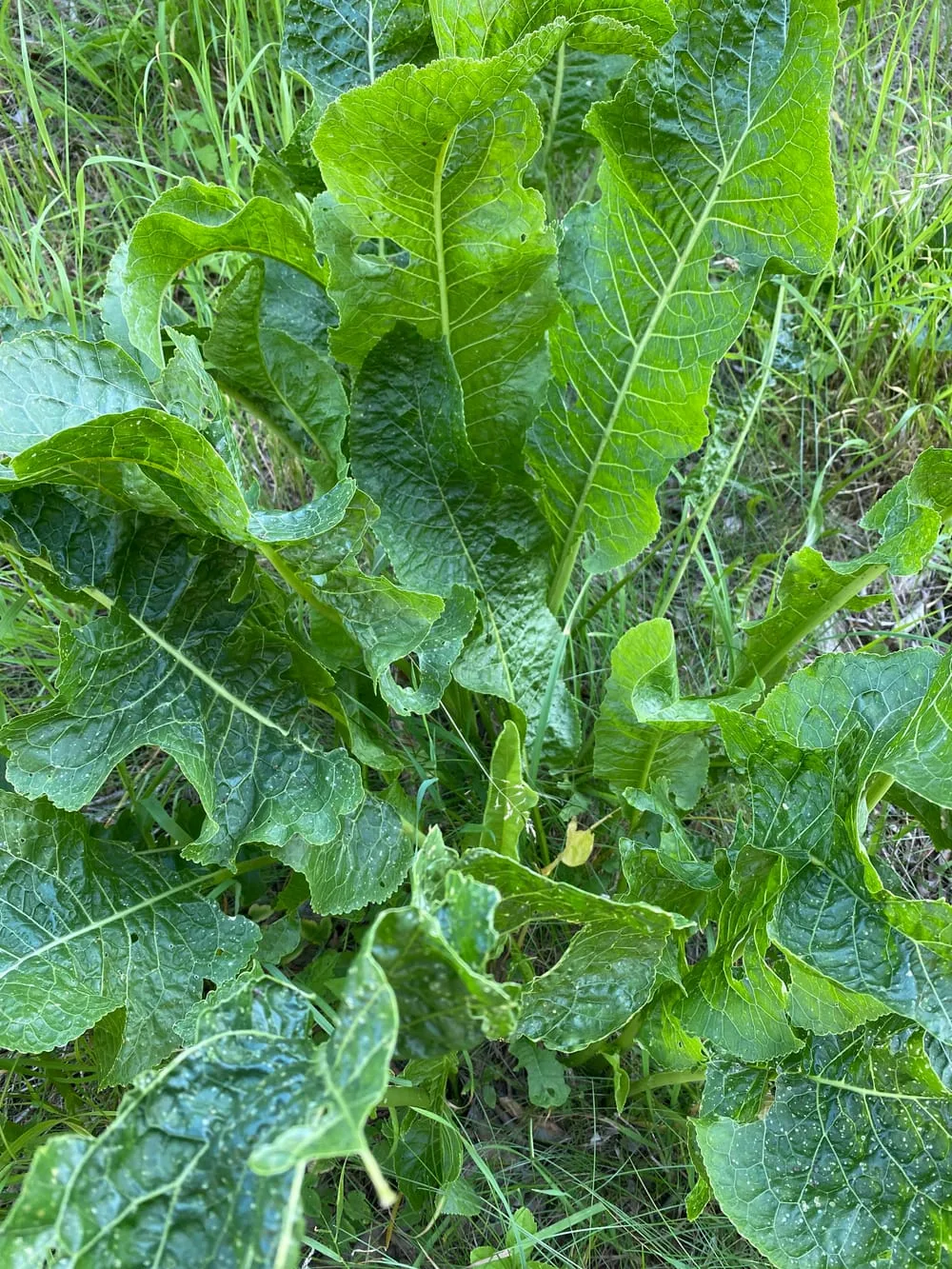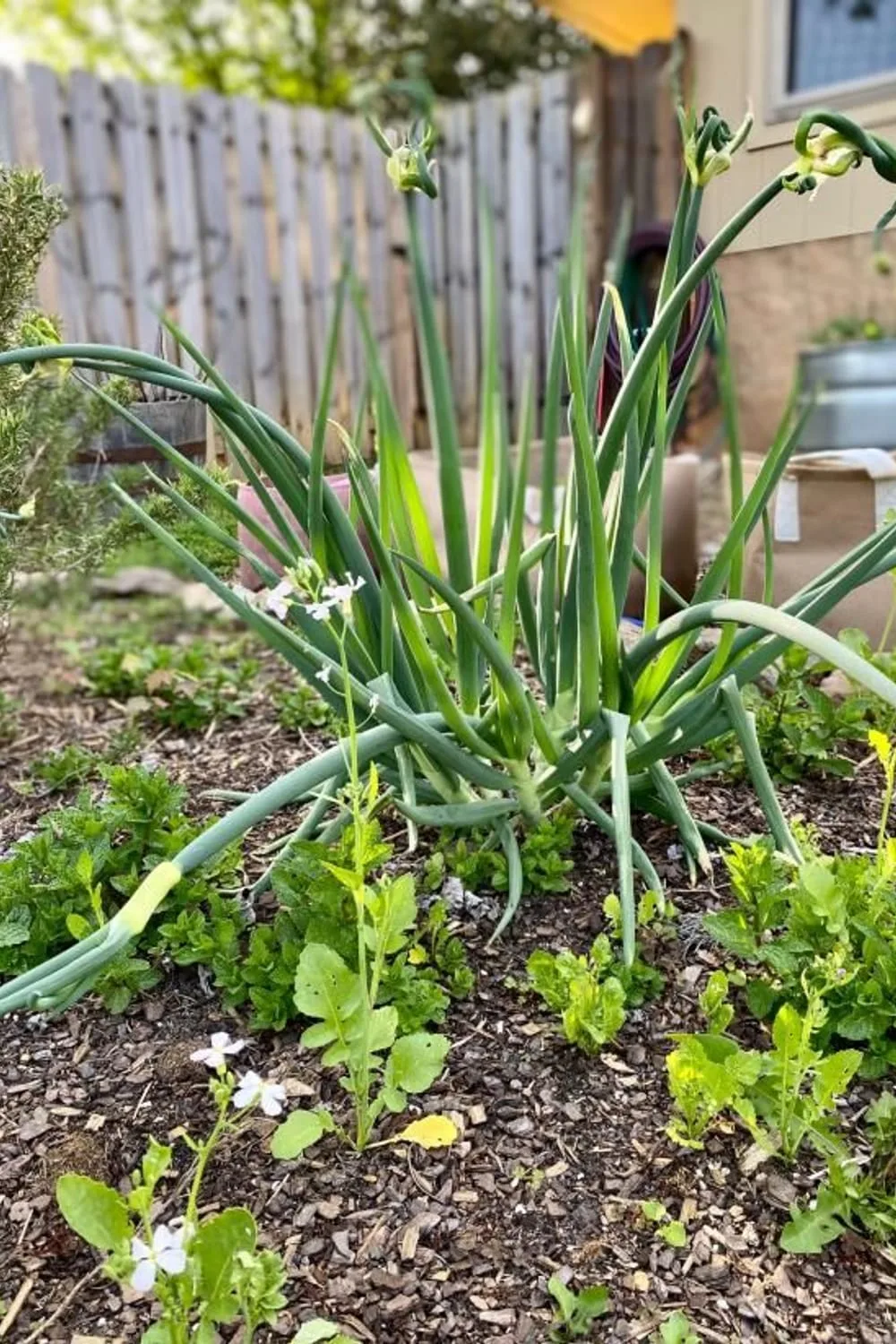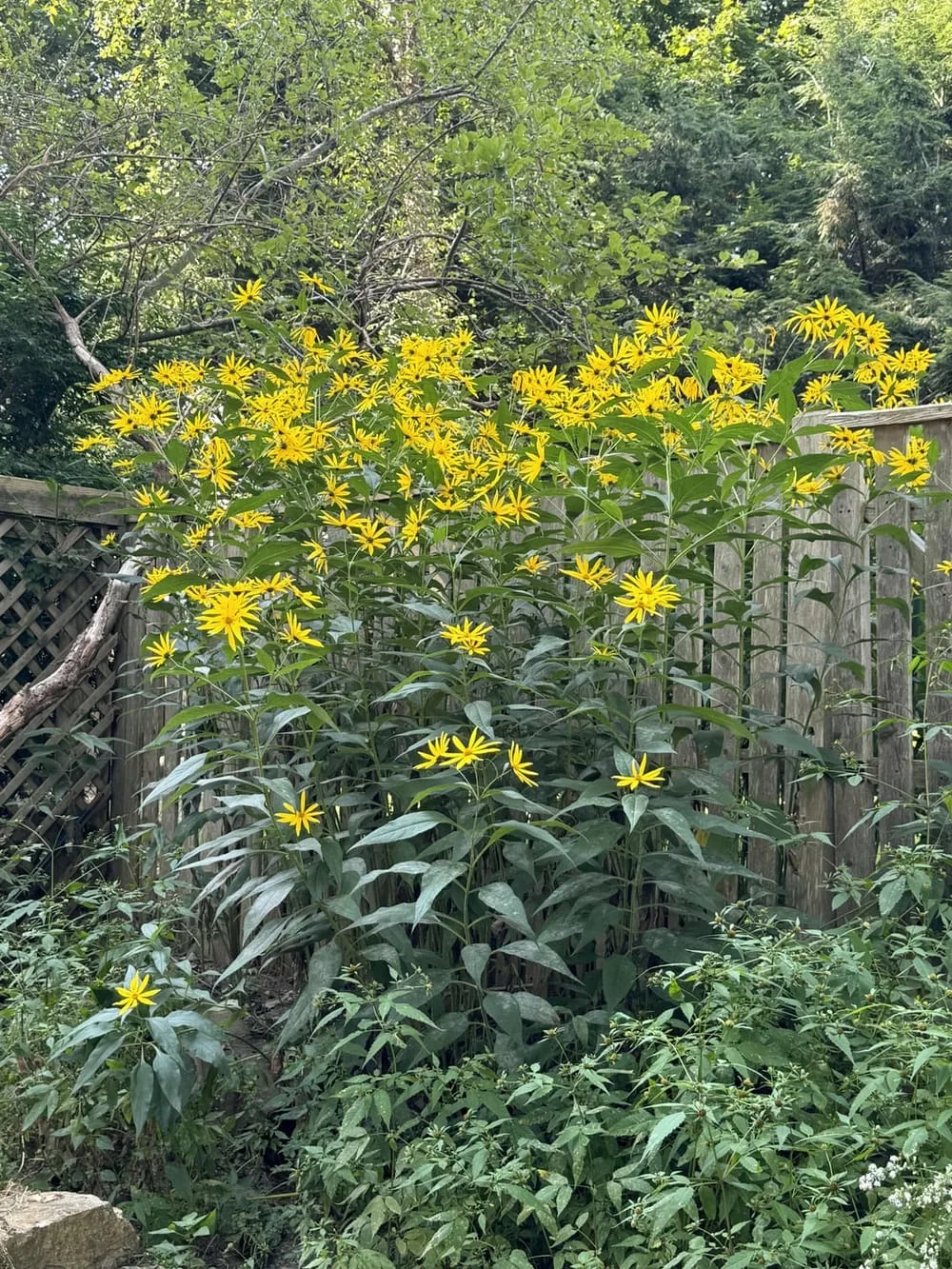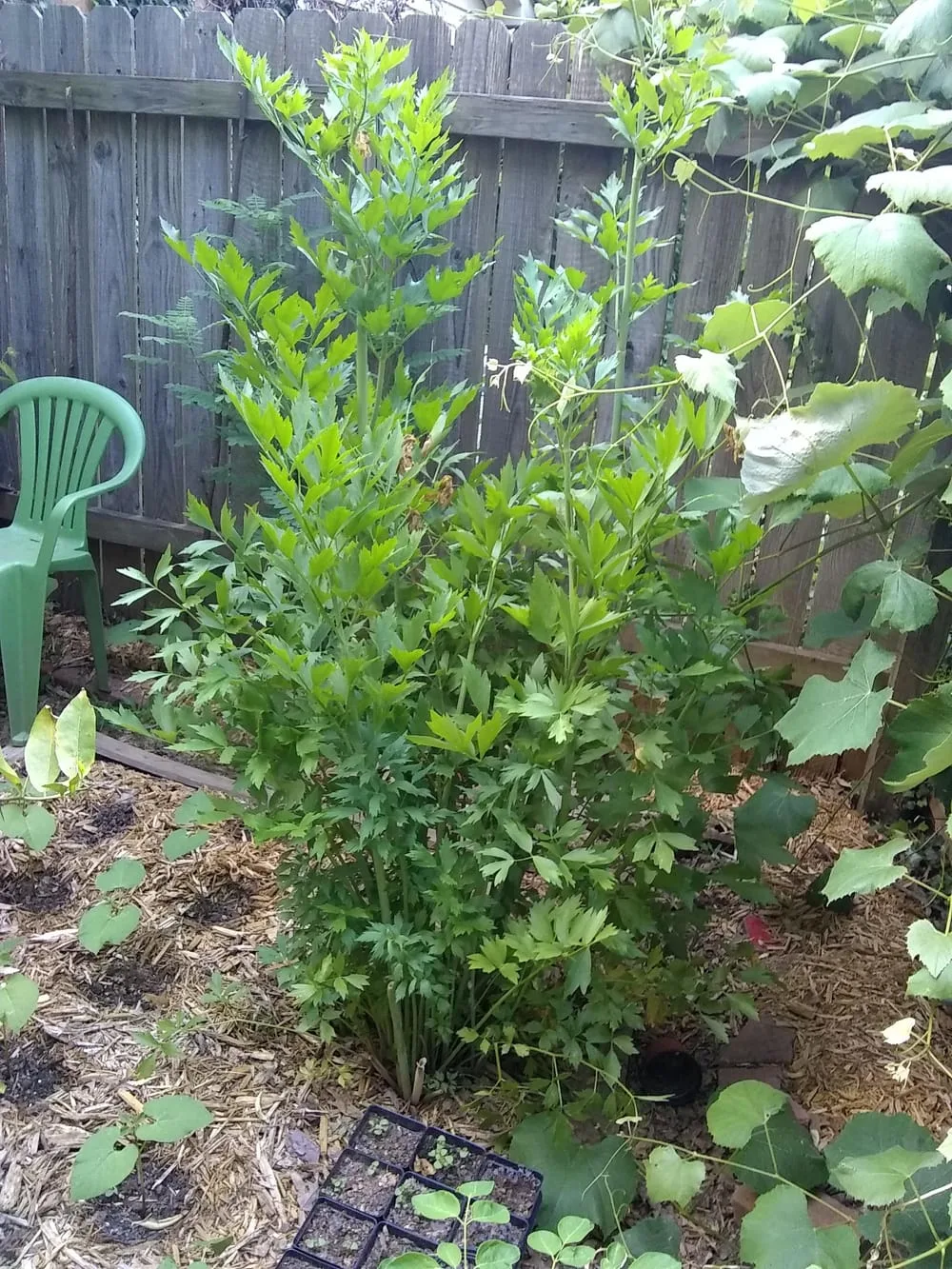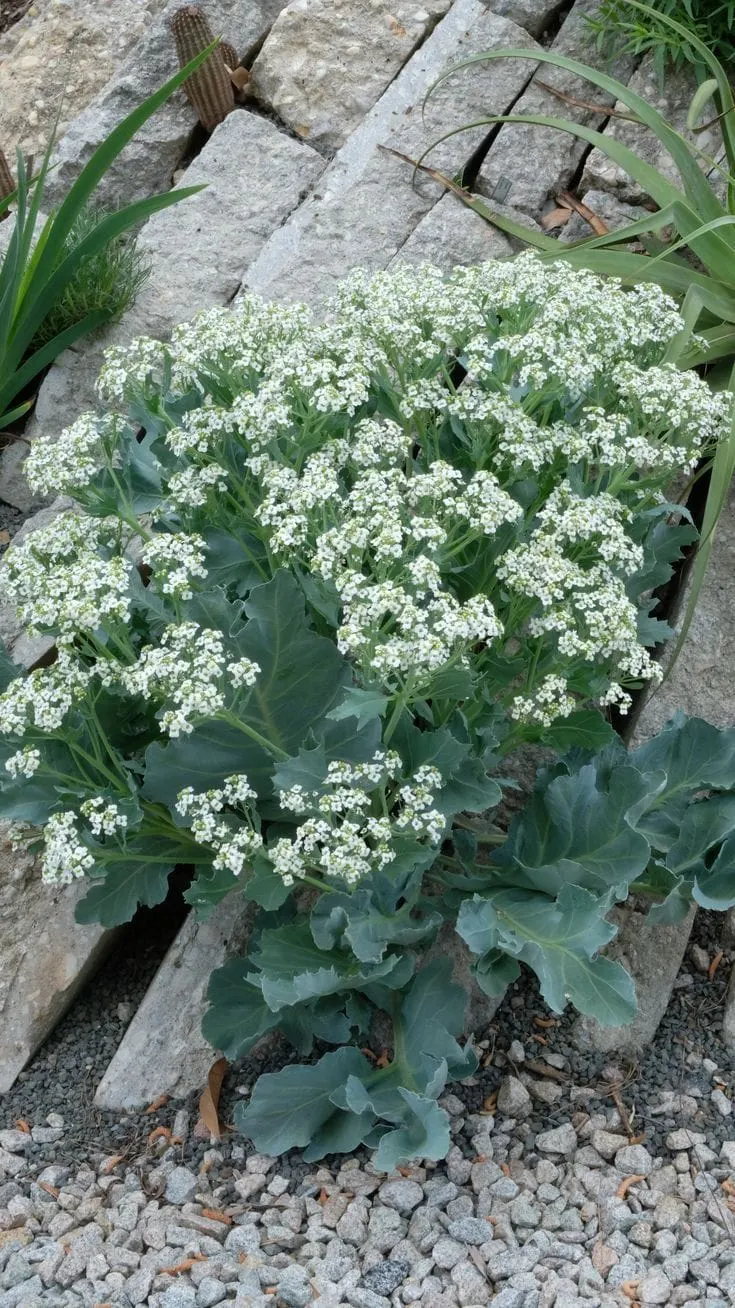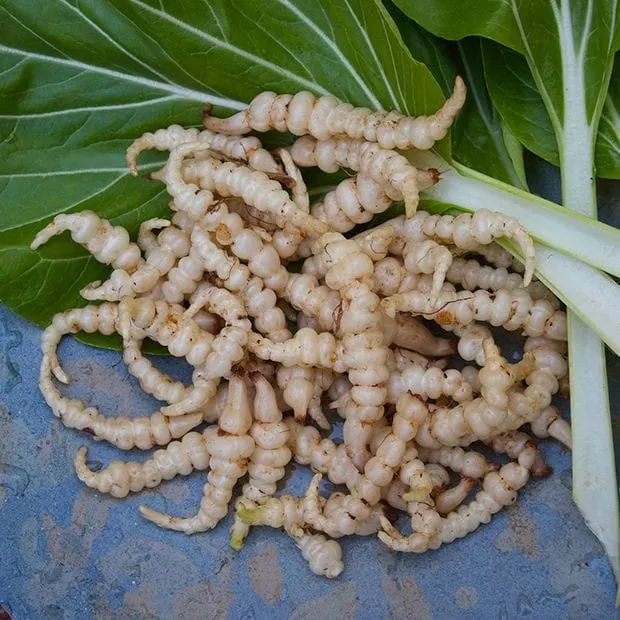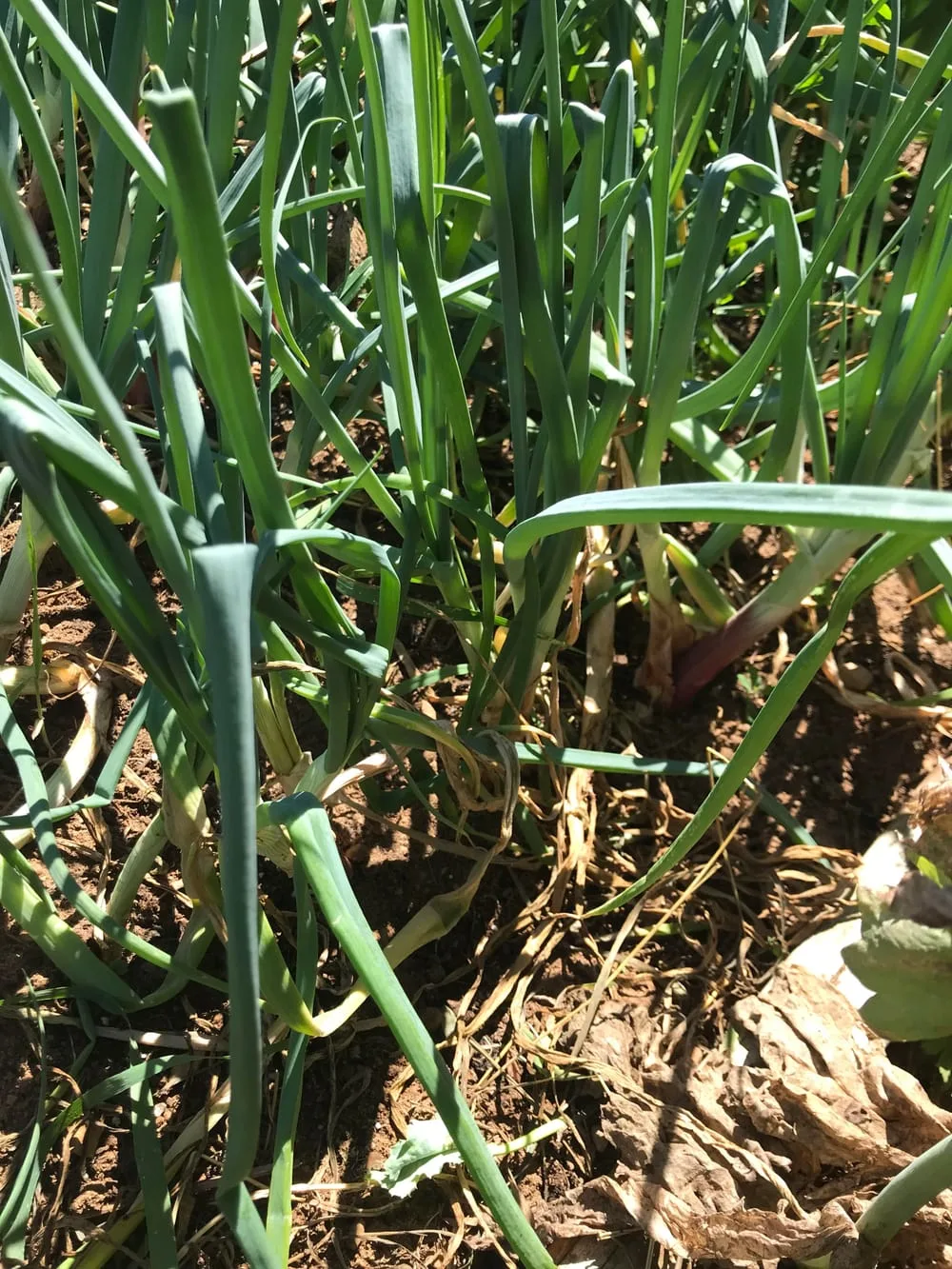Imagine a garden that keeps on giving year after year without the need for constant replanting. That’s the beauty of perennial vegetables.
Unlike their annual counterparts, which need replacing each season, perennials return every year, ready to grace your table with nutritious bounty.
These hardy plants are not only a gardener’s delight but also a sustainable choice for those looking to reduce their gardening chores and carbon footprint.
Perennial vegetables are a smart investment for anyone wishing to create a low-maintenance yet productive garden.
By planting them, you’ll enjoy a steady supply of fresh produce with minimal effort. This approach aligns well with sustainable living principles, cutting down on resource use while maximizing output.
Let’s explore twelve wonderful perennial vegetables that can transform your garden into a perennial paradise.
1. Asparagus: A Spring Staple
Known for its unique flavor and health benefits, asparagus is a perennial favorite. Once established, asparagus can produce for up to 20 years, providing a steady spring harvest.
It requires well-drained soil and a bit of patience, as it takes a few years to reach full production. However, the reward is well worth the wait, with tender spears heralding the arrival of spring.
One key to successful asparagus cultivation is ensuring proper planting depth and spacing. This will maximize yield and maintain plant health. Whether steamed, grilled, or roasted, these spears pack a nutritious punch, rich in vitamins A, C, and K.
2. Rhubarb: Not Just for Pies
Rhubarb is often associated with sweet desserts, but its tart flavor can also enhance savory dishes. This robust perennial thrives in cooler climates and can yield for up to 15 years. It prefers fertile, well-drained soil and a sunny spot in your garden.
Harvesting rhubarb is simple: gently pull the stems from the base once they reach about 10 inches in length.
Always leave some stalks to ensure the plant’s vitality for the coming years. Remember, only the stalks are edible; the leaves should be discarded due to their high oxalic acid content.
3. Artichokes: Mediterranean Delight
Adding a touch of the Mediterranean to your garden, artichokes are as stunning as they are delicious. These plants can produce for up to five years, thriving in mild climates.
Rich soil and full sun are crucial for healthy growth and bountiful harvests.
The buds, with their distinct flavor, can be enjoyed in various dishes, whether boiled, steamed, or grilled. Artichokes not only enhance your culinary adventures but also add striking architectural beauty to your garden.
4. Sorrel: A Tangy Touch
Sorrel is a leafy green that’s often underappreciated but offers a delightful lemony tang to salads and soups. It’s a fast-growing perennial that thrives in full sun or partial shade and prefers well-drained soil.
This hardy plant is easy to maintain and can keep producing for several years. With its bright tangy flavor, it adds a zing to any dish, making it a must-have in your perennial collection.
5. Horseradish: Spice of the Garden
For those who love a bit of spice, horseradish is a perennial root vegetable that’s easy to cultivate and even easier to love. With its peppery kick, it adds depth to sauces and condiments.
Horseradish is a vigorous plant and once planted, it can become a permanent fixture in your garden. The roots are harvested in the fall, but be mindful that any piece left in the ground can regrow, ensuring your supply year after year.
6. Walking Onions: Nature’s Convenience
Also known as Egyptian onions, walking onions are a curious perennial that reproduces by growing topsets at the end of their stalks, which eventually falls over and replants themselves.
This self-sowing habit makes them incredibly low-maintenance. Use the bulbs and topsets in cooking just like regular onions. They’re an interesting addition to your vegetable plot and a conversation starter, thanks to their unique growth pattern.
7. Good King Henry: The Green of Kings
Good King Henry is an ancient vegetable that was once favored across Europe. Its tender shoots resemble asparagus, while the leafy greens can be cooked like spinach.
This perennial thrives in partial shade and well-drained soil. It might take a couple of years to establish, but it rewards patience with a reliable source of greens that return every spring.
8. Jerusalem Artichokes: Nutritious and Nutty
Jerusalem artichokes, or sunchokes, are tubers that offer a mildly sweet, nutty flavor. They thrive in sunny spots and can be a bit invasive, so it’s wise to plant them in a contained area.
Ready for harvest in the fall, these tubers can be enjoyed raw, roasted, or sautéed, providing a versatile addition to your meals. Plus, they’re a great source of prebiotics, supporting digestive health.
9. Lovage: The Celery Alternative
Lovage is a perennial herb that offers a bold celery-like flavor, perfect for soups and stews. It grows tall, often reaching six feet, and prefers rich, moist soil.
Once established, lovage returns each year, providing an abundant supply of leaves, stems, and seeds that can be used in cooking. Its strong aroma and flavor make it a potent addition to your culinary toolkit.
10. Sea Kale: Coastal Resilience in Your Garden
Sea kale is a perennial cabbage family member and a coastal plant that’s well adapted to salty conditions. It requires well-drained soil and plenty of sunshine to thrive.
Aside from its resilience, sea kale offers edible shoots, leaves, flowers, and roots. Its multi-purpose nature makes it an excellent addition to any garden setting, especially those near the coast.
11. Chinese Artichokes: Tiny Treasures
Chinese artichokes produce small, crunchy tubers reminiscent of water chestnuts. They’re best planted in a sunny spot with loose, well-drained soil.
The tubers are harvested in late autumn and are ideal for stir-fries or salads. Whether eaten raw or cooked, they add a delightful texture and flavor to your dishes.
12. Welsh Onions: The Perennial Ally
Welsh onions, similar to spring onions, are a versatile perennial that can be harvested year-round. They thrive in rich, well-drained soil and can tolerate partial shade.
Use them fresh in salads or as a garnish, just like you would with scallions. Their ease of growth and continuous supply make them a worthy addition to your culinary landscape.
Celebrating Perennial Abundance
Planting perennial vegetables is a rewarding endeavor that merges practicality with sustainability. These plants not only ease gardening efforts but also enrich your diet with diverse flavors and nutrients.
Engaging with perennials encourages us to think long-term, fostering a deeper connection with our gardens and the cycles of nature.
So, whether you’re keen on cutting down your garden workload or embracing a more sustainable lifestyle, perennial vegetables offer a delightful path forward.
Consider adding some of these resilient plants to your garden and enjoy the fruits—literally and figuratively—of your labor for years to come.

